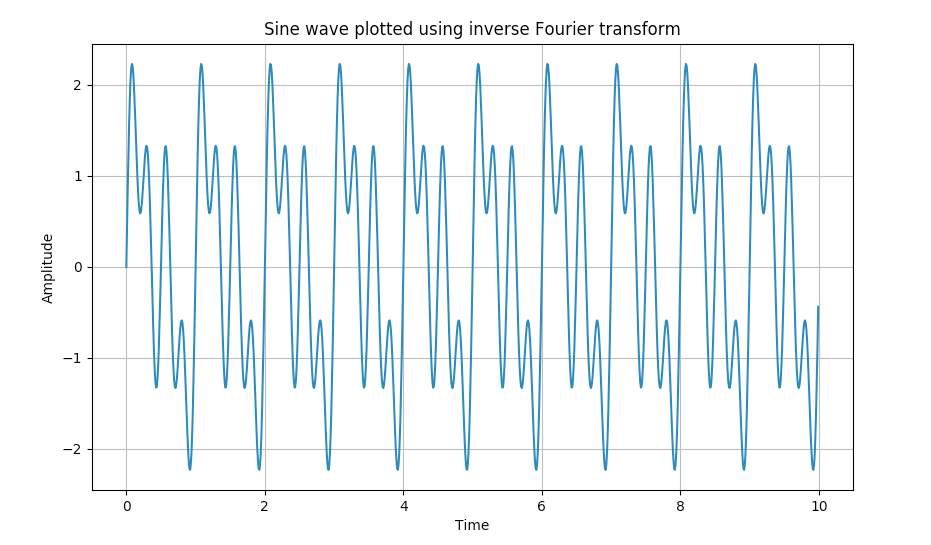Overview:
- While the Discrete Time Fourier Transform transforms a signal from time domainto frequency domain, the inverse Discrete Time Fourier Transform takes the representation of the signal back to the time domain.
- The inverse of Discrete Time Fourier Transform - DTFT is called as the inverse DTFT.
- The Python module numpy.fft has a function ifft() which does the inverse transformation of the DTFT.
- The Python example uses a sine wave with multiple frequencies 1 Hertz, 2 Hertz and 4 Hertz. The signal is plotted using the numpy.fft.ifft() function.
Example:
|
import numpy as np import matplotlib.pyplot as plt
# Time period t = np.arange(0, 10, 0.01);
# Create a sine wave with multiple frequencies(1 Hz, 2 Hz and 4 Hz) a = np.sin(2*np.pi*t) + np.sin(2*2*np.pi*t) + np.sin(4*2*np.pi*t);
# Do a Fourier transform on the signal tx = np.fft.fft(a);
# Do an inverse Fourier transform on the signal itx = np.fft.ifft(tx);
# Plot the original sine wave using inverse Fourier transform plt.plot(t, a); plt.title("Sine wave plotted using inverse Fourier transform"); plt.xlabel('Time') plt.ylabel('Amplitude') plt.grid(True)
plt.show(); |
Output:
